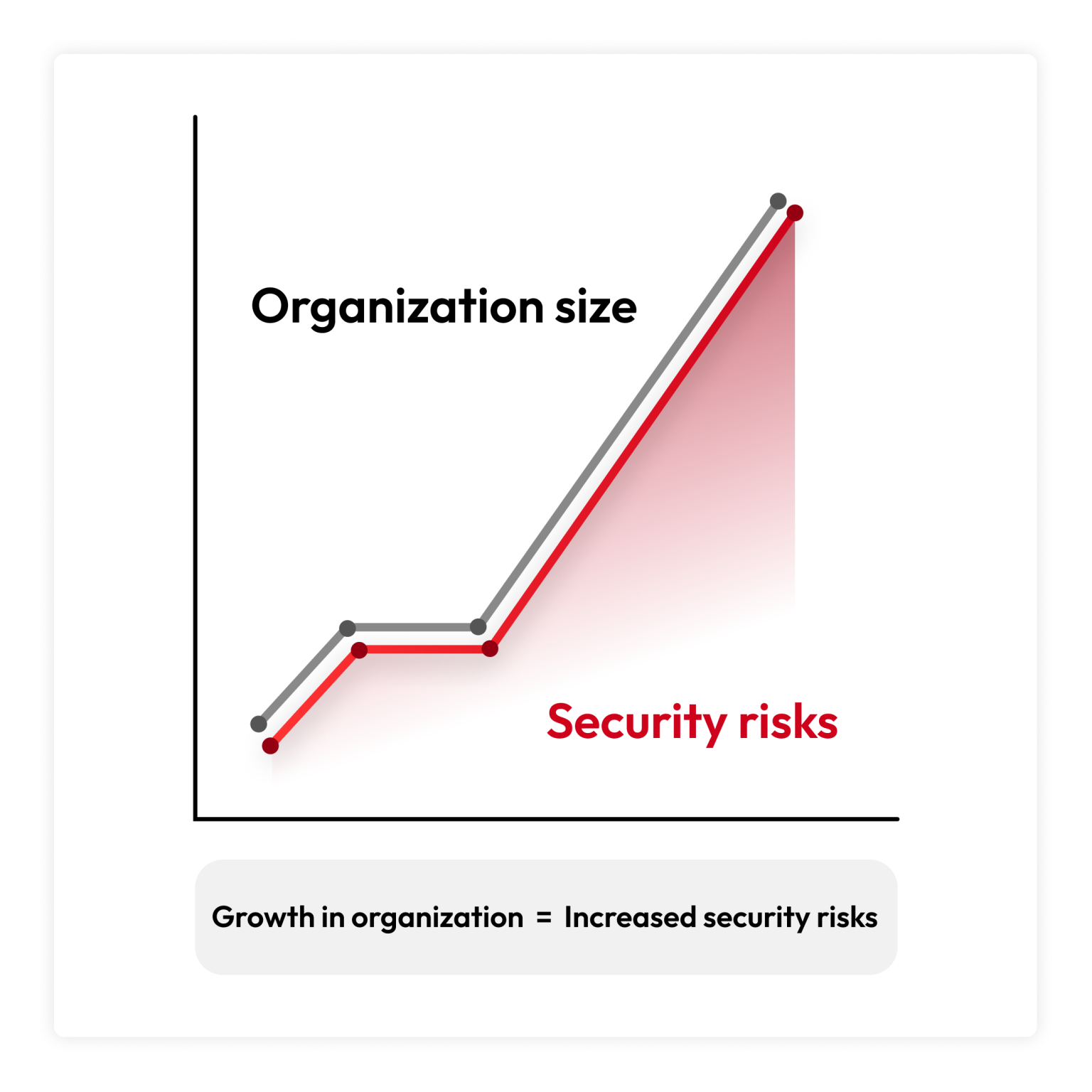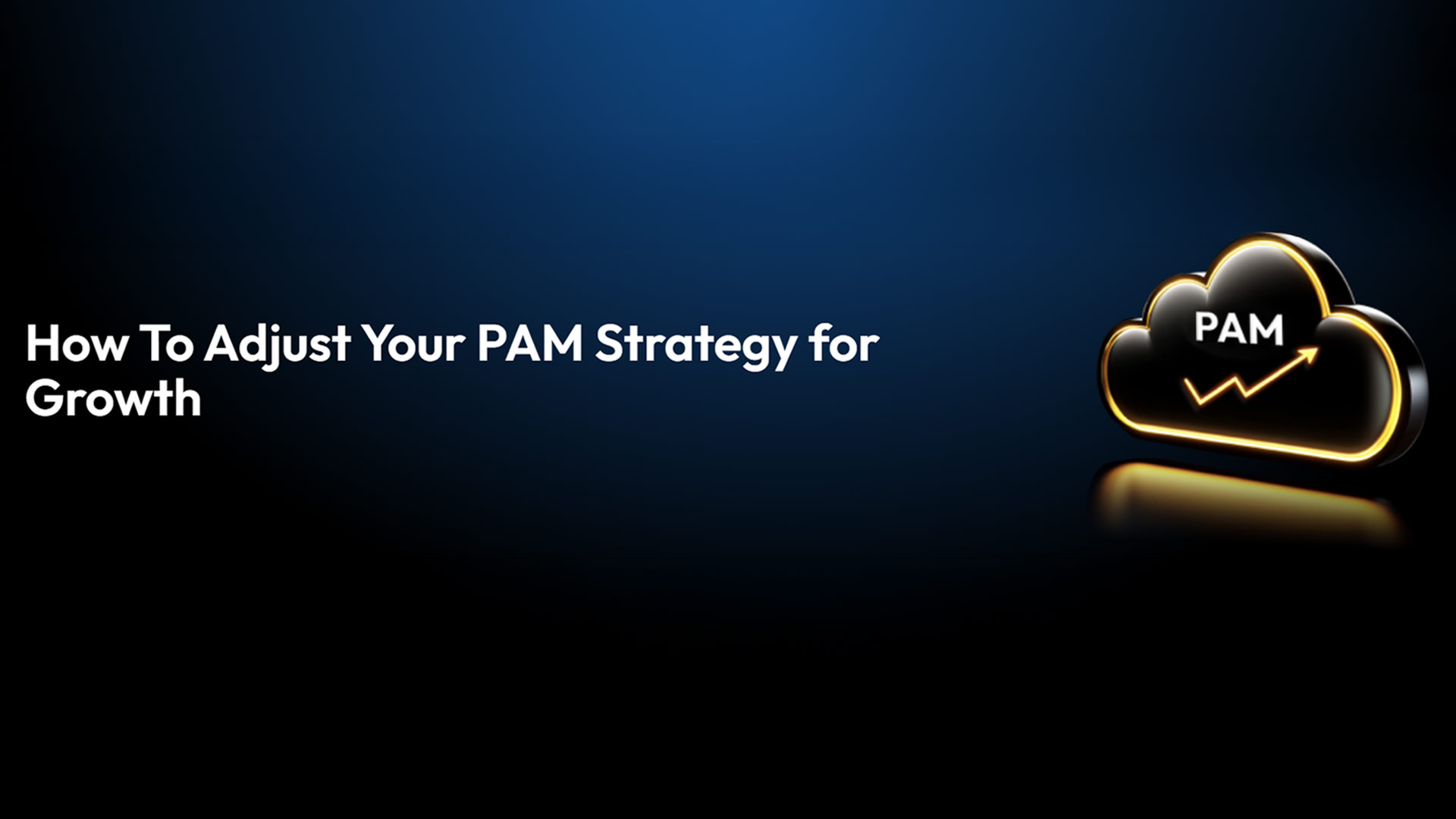The best way to adjust your Privileged Access Management (PAM) strategy for growth is to choose a cloud-based PAM solution that scales with your organization. You may face many challenges when adjusting your PAM strategy as your organization grows, including more complex infrastructure, a higher number of login credentials to manage and increased security risks, so you need to have a flexible PAM solution.
Continue reading to learn more about the challenges your organization may face when adjusting its PAM strategy and why you should choose a cloud-based PAM solution that grows with you.
Challenges in adjusting your PAM strategy as you grow
As your organization grows, your PAM strategy must scale and evolve to address increased complexity, manage access, balance security with usability, meet compliance requirements and overcome scalability issues with your current PAM solution, if you have one. However, for organizations that aren’t prepared, these challenges can become significant obstacles to maintaining a secure and efficient infrastructure.
Infrastructure becomes more complex
As your organization grows, your infrastructure becomes more complex because you may have an increased number of users, devices and resources across different regions. You may need to shift to cloud services or combine on-premises with cloud solutions, which can bring its own set of challenges.
The more employees your organization hires, the more endpoint devices your IT team will need to manage and secure. Having diverse endpoints, such as laptops, tablets, phones and other Internet of Things (IoT) devices, makes it difficult for your IT team to manage and track access across all platforms and devices. In addition to an influx of new employees, your organization will likely need to grant new users privileged access to sensitive data. With each new privileged account, there is a greater need to ensure these accounts are secure across all systems.
Credential management
When you hire more employees, managing credentials becomes more challenging, especially for users who require privileged access, such as those in key roles like IT or HR. As your organization expands, it’s not just about adding accounts but about managing who needs access to what and when. It’s important to have a PAM strategy in place that allows you to track who has privileged access, both permanently and temporarily. With a strong system in place that follows the Principle of Least Privilege (PoLP), you can more easily audit privileged accounts and determine whether they still require the same access as they once did.
Balancing security with usability
Your organization must keep its systems secure and usable to ensure employees can do their jobs productively. However, this can be challenging with more employees, since they have varied access needs. Overly strict security can hinder productivity, while lenient controls can increase the risk of breaches. Role-Based Access Control (RBAC) ensures that each employee can access only the sensitive data they need to perform their job within your organization. By assigning access based on roles, RBAC helps control who can access specific data and limits which employees can access certain sensitive systems without preventing them from accessing the systems and data they need to do their jobs. Single Sign-On (SSO), on the other hand, enables employees to log in once and gain access to all authorized systems without needing to log in separately each time. This not only improves security by reducing the need to manage multiple sets of credentials but also improves productivity by saving employees time and streamlining their access to necessary resources. As you adjust your PAM strategy, ensure that your PAM solution supports both RBAC and SSO.
Overcoming scalability issues with your current PAM solution
The PAM solution you currently use may work well for a smaller team or fewer systems, but as your organization continues to grow, it may fail to scale with you. Your organization should adopt a cloud-based PAM solution that can grow with you and won’t sacrifice security or performance while adapting to more privileged users, systems, platforms and data.

Keeping up with compliance requirements
As your organization expands into new regions or countries, it will face new challenges regarding regulatory and compliance requirements. Since each jurisdiction has its own requirements for securing privileged data, you must ensure your organization complies with a variety of regulations based on location.
Some common compliance requirements that vary based on industry and location include:
-
- General Data Protection Regulation (GDPR): Applies to organizations that sell to customers located in the European Union.
- Health Insurance Portability and Accountability Act (HIPAA): Applies to the healthcare industry in the United States.
- Service Organization Control Type 2 (SOC 2): A voluntary compliance framework primarily relevant to companies that sell cloud-based products and services, emphasizing data security, availability, processing integrity, privacy and confidentiality.
These frameworks require your organization to enforce strict controls over who can access sensitive data. Ensuring that your PAM solution scales with your organization’s growth and provides a centralized dashboard for managing and auditing privileged access is needed for meeting compliance requirements and minimizing risks.
Choose a cloud-based PAM solution that grows with you
To address the growing pains that your organization may face, you need to choose a cloud-based PAM solution that grows with you, like KeeperPAM®: a cloud-based, zero-trust and zero-knowledge security solution.
KeeperPAM is highly scalable, making it the best solution for growing organizations. As your organization adds new users or departments, IT administrators can quickly provision new accounts with RBAC, ensuring that employees only have access to the data and systems they need. Additionally, features like Just-In-Time (JIT) access make it seamless to grant temporary access only when needed and automatically revoke that access once a task is complete. As you continue to add to your infrastructure and tech stack, Keeper has hundreds of integrations that allow teams such as security and DevOps to continue using their preferred solutions securely.
For a growing organization, KeeperPAM’s scalability helps you maintain high security standards while supporting increased access demands. Users can access their Keeper Vaults from anywhere, providing a better experience across locations and devices, ensuring your PAM solution grows with your business needs.
Future-proof your PAM strategy with KeeperPAM
Prepare for the future of your growing organization by switching to a scalable PAM solution like KeeperPAM. By future-proofing your PAM strategy with KeeperPAM, you can overcome the challenges most organizations face when adjusting their PAM strategies, including complex infrastructure, managing more privileged accounts, balancing security with usability and overcoming scalability issues.
Request a demo of KeeperPAM today and enhance your PAM strategy.
Source: Keeper





